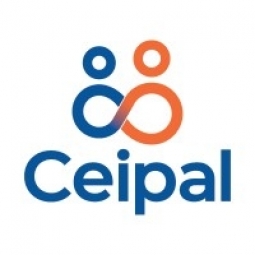Technology Category
- Analytics & Modeling - Machine Learning
- Platform as a Service (PaaS) - Application Development Platforms
Applicable Functions
- Procurement
Use Cases
- Leasing Finance Automation
- Material Handling Automation
Services
- System Integration
- Testing & Certification
About The Customer
Business Technology Group (BTG) is an independent IT consulting and staffing firm based in Florida, with a rapid expansion across the United States. Founded in 1995, BTG has been making placements since the first ATS was created. They focus on delivering long-term value through ethical and innovative partnerships with their clients, candidates, and consultants. Despite being an established provider of talent and relying on one of the best-known legacy ATS platforms, BTG found the technology disappointing and inhibiting their growth.
The Challenge
Business Technology Group (BTG), an independent IT consulting and staffing firm, was facing several challenges with their legacy Applicant Tracking System (ATS). The first issue was the high cost of the system, with a rigid one-year contract and additional charges for every extra integration. The second problem was the lack of comprehensive business analytics and data management. The system failed to provide internal metrics on company-wide productivity or generate reports based on the team's Key Performance Indicators (KPIs). Moreover, all data updates had to be managed manually, which was time-consuming and hindered productivity. Lastly, the system lacked key feature capabilities such as seamless job board integrations and automatic candidate engagement & follow-up. The ATS only offered integration with one job board, limiting their talent pool, and its candidate engagement features lacked automation.
The Solution
BTG decided to explore innovative solutions and discovered CEIPAL's AI-powered platform. They conducted an experiment to test the capabilities of AI by comparing the results of candidate searches using their old system and CEIPAL's AI. CEIPAL's platform increased recruiter productivity by providing built-in & customizable industry reports, interactive dashboards, and comprehensive analytics. This data-driven approach improved the team's performance. CEIPAL's AI-powered candidate matching & ranking, automatic candidate sourcing, and other features enabled BTG to make higher quality submissions in less time. The platform's low cost allowed BTG to reinvest the savings in building stronger client relationships and expanding their market reach.
Operational Impact
Quantitative Benefit

Case Study missing?
Start adding your own!
Register with your work email and create a new case study profile for your business.
Related Case Studies.

Case Study
Metal Fabrication
As each mast section needs a total of 222 reliable welds, manufacturing them is an extremely labor intensive process.Until recently, STROS had to use highly skilled welders to make these sections. Although it has been using robots for 25 years, these machines could not manage the complex arc welds in narrow spaces needed for these particular components. Consequently, in order to produce a satisfactory number of mast sections it had to employ three welders per shift at three separate workstations to make these pieces. Apart from the obvious outlay this required in terms of manpower and space, STROS found it increasingly difficult to recruit the highly qualified welders needed for this work. That's why in 2007 the company decided to hold a tender for the complete robotization of its manufacturing process for mast sections. Of the four firms who participated, only the ABB group could fulfill all its requirements.

Case Study
Digital Transformation in Insurance: A Case Study of Menora Mivtachim
Menora Mivtachim, one of Israel's largest pension fund and insurance carriers, was facing a significant challenge due to demographic trends in Israel. The growing rate of retirement planning and services was putting unprecedented pressure on the already strained insurance sector. The pension claims process was bottlenecked with complexities, bureaucracy, and errors. Menora Mivtachim's existing pension process was heavily manual and spreadsheet-based, requiring a team of 10 full-time employees to manage. The process involved gathering applicant information, conducting personal surveys, compiling bank information, and finalizing agreements. To leverage the growing opportunity in the retirement sector and position themselves as innovative insurtech leaders, Menora Mivtachim needed to digitalize their process, streamline the claims experience, and reduce quote times through automated processes.

Case Study
Automation in Mining: Unleashing Productivity and Efficiency with 5G
The mining industry, a significant contributor to global economic activity with revenues exceeding USD 500 billion, is facing a challenge of improving efficiency and profitability. The industry is gradually shifting its focus towards automation as the next area of opportunity. Boliden, one of the world's most successful mining companies, operates the Aitik mine, the largest open pit in Europe. The Aitik mine is expanding, and with the increase in production from 36 million metric tons of ore to 45 million metric tons, the amount of rock removed will also increase significantly. However, increasing the number of machines required for rock removal in a busy mine is not a straightforward task. Additionally, every blast creates toxic gases that need to dissipate before humans can enter the area and begin excavation. The challenge lies in improving efficiency, managing the increased production, and ensuring safety in the harsh mining environment.

Case Study
ANZ Bank's Digital Transformation with Nintex Advanced Workflow
ANZ Bank, one of the top 50 banks in the world and the fastest-growing bank in Indonesia, was facing a challenge with its rapidly increasing transaction volume. The bank's existing business processes and workflow were becoming overwhelmed. Like most banks in Indonesia, ANZ was manually handling document submission and verification. Customers filled out paper loan applications and supporting documents, then delivered them to bank branches by mail or courier. Branch officers traveled to the bank’s headquarters or used postal mail, email, and phone calls to submit loan documents for verification. Lost or inaccurate documents created more emails and phone calls. Additionally, ANZ had to adhere to strict verification and financial regulations, including the Foreign Accounts Compliance Act. This act requires that all banks outside the United States provide key information about U.S. clients, including citizenship validation, to the Internal Revenue Service–a complex yet crucial process.

Case Study
Conveyor Belt Monitoring
In a smart environment of management, control and industrial automation, one of the key elements to anticipate failures and increase productivity is to be able to monitor the status and use of conveyor belts of any kind of sector, whether it is for logistics or manufacturing.




